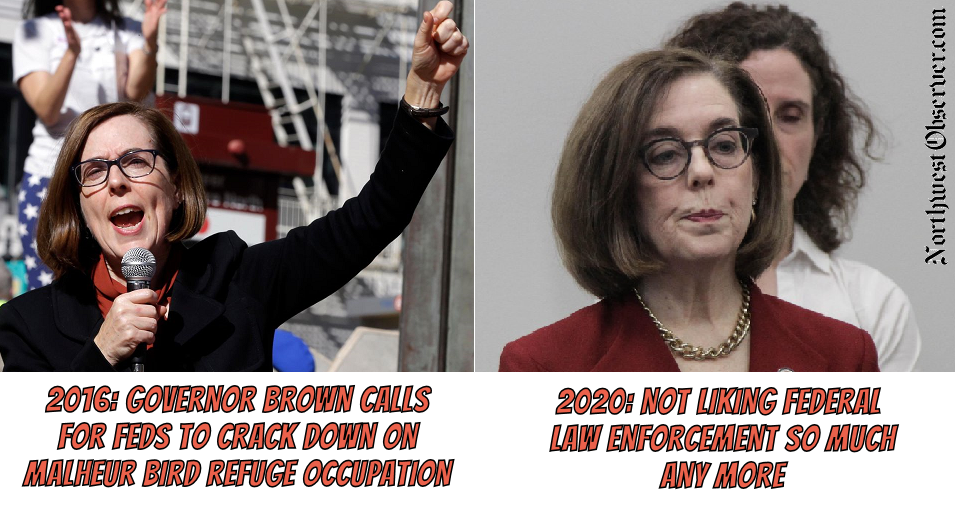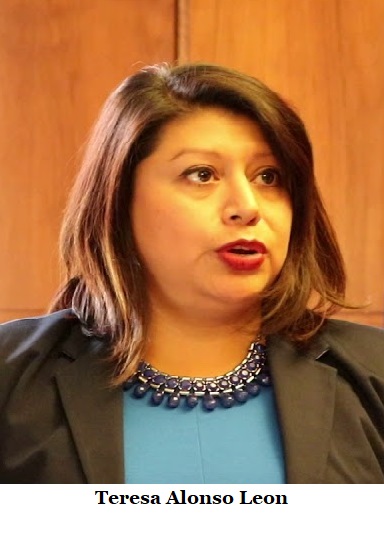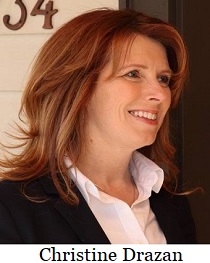
On this day, August 27, 2019, jet-car speed racer 30-year-old Jessi Combs, known by fans as the "fastest woman on four wheels," died in a crash in the Alvord Desert in Southeastern Oregon while trying to break a speed record.
 Post an Event
Post an Event
| Benton County Republicans’ Private Fundraising Event, “Bent-on Boots and Bling” with Trey Taylor |
| Friday, September 5, 2025 at 5:00 pm |
| Featuring Trey Taylor
Music Private Event
Friday, September 5, 2025 5:00-5:30 pm VIP Reception
5:30-8:00 pm Heavy Appetizers,
Auction, Concert
Red: $750 VIP Reception
Front Row Table Sponsor
White: $500 Table Sponsor
Blue: $50 per person
Limited Seating. Get Yours Now!!!
Support Local
Dress up: Bling, Cowboy, Patriotic Benton County Republican
FUNDRAISER
www.BentonGOP.org
Get your tickets today at:
https://www.bentongop.org/event-details/benton-county-republicans-fundraiser/form
About Trey:
Trey is the youngest African American Man in Country Music History. The Denver Post wrote
"It's impossible to miss his enthusiasm. With a fondness for cowboy boots, gaudy colors and dazzling jewelry, Trey Taylor could stand toe to toe with any of the Pop, Country or even Rap
contemporaries of his generation.“ |
| Trysting Tree Golf Club, 34028 NE Electric Rd., Corvallis |
Never let gubernatorial hypocrisy go unpunished
--Northwest Observer Meme Team| Post Date: 2020-07-20 17:39:07 | Last Update: 2020-07-20 17:39:18 |
Voters are being denied their right to referendum
No Fake Emergencies is announcing today that they are beginning circulation of a titled ballot initiative for the 2022 election cycle. The received approval to circulate last week from the Secretary of State.
Initiative Petition 1, dubbed “No Fake Emergencies 2022†will reform the ways emergencies are handled in the legislative process. The major effect of the initiative will be to require a 2/3 majority vote on most bills declared to be an emergency.
By declaring a bill to be an emergency, the legislation not only takes effect upon being signed by the Governor, it removes the ability of the people to subject the legislation to a referendum, where it can be effectively vetoed by the people. Critics have pointed out that this process is being abused by being applied to bills which are not emergencies, but to avoid the referendum process.
Chief Petitioner State Representative Bill Post (R-Keizer) said, “for the last 5 years, as a legislator, I’ve witnessed the absolute abuse of the ‘emergency clause’ in legislation. I strongly believe that if there is an 'emergency' then it should so be declared and stated exactly what that 'emergency' is. Instead, this legislative tool has been used to override the will of the voters. It’s time for the voters to have the say in what is an 'emergency'."
State Representative Gary Leif (R-Roseburg), also one of the Chief Petitioners, added, “for far too long the emergency clause is being used for political gain rather than what it was intended for. It’s intended to bridge the gap when resources run out. Instead it’s used so that the people cannot have a voice.â€
The campaign needs to gather 149,360 signatures by July of 2022 to make the November 2022 ballot. More information can be found at their
website.
--Staff Reports| Post Date: 2020-07-20 14:18:42 | Last Update: 2020-07-20 15:18:57 |
Make higher ed fund itself. It creates enough value to do so.
 Editor’s note: This is the eighth in a multi-part series on the budget for the State of Oregon and where possible efficiencies can be found.
Editor’s note: This is the eighth in a multi-part series on the budget for the State of Oregon and where possible efficiencies can be found.
It's rare that an opportunity presents itself to save money while at the same time making a policy decision that makes sense.
In 2013, the State of Oregon passed a first-in-the-nation
"Pay it Forward" describing a pilot for this kind of higher education tuition plan. They way the plan works is described
in the bill itself:
"[I]n lieu of paying tuition or fees, students must sign binding contracts to pay to the State of Oregon or the institution a certain percentage of the student’s annual adjusted gross income upon graduation from the institution for a specified number of years."
The dollar amounts are dizzying. In the 2019-21 biennium, State of Oregon general and lottery fund support for four year colleges was over $1.3 billion and that represents about 18% of the budget for Oregon University programs. The state could rescind the general fund money, and back a bond to create a startup fund for pay-it-forward scholarships. Since the money gets paid back into the fund, the fund is self-sustaining -- or even expanding, if the university manages it well. Ultimately, the fund could be required to do the service on the debt that was taken on to create the fund.
There are several positive aspects of the program:
- It virtually solves the student debt problem, at least for new students who participate in the program going forward
- Universities are incentivized to get the student through their programs. Currently, Universities are incentivezed to allow students to drink beer, languish and keep paying tuition. A pay-it-forward scholar who is still attending school is tying up money that could be used for the next scholar, and the university will take more steps to help students move along.
- It will have a tendency to direct support toward students and degree programs that have value in the marketplace. Conversely, it will focus support away from programs that are tempting to students, but don't create great earning potential.
- Scholarships can be easily directed to students who are deserving based on merit, as well as need.
- Universities crave more autonomy. In 2011 the legislature moved to make Oregon's universities more accountable to their own boards and less accountable to the state This program would free them from the bonds of state funding and the strings attached to those.
This program seems to have little downside while at the same time holds great potential for revolutionizing four-year higher education in Oregon. It can also deliver some great budget cuts.
Savings: Up to $1.3 billion biennially
--Staff Reports| Post Date: 2020-07-20 08:00:00 | Last Update: 2020-07-06 22:31:14 |
Let’s replace it with School Choice
Oregon’s Governor Kate Brown has made her intentions clear. The return to school this fall will not look normal. As stated in the
Governor’s July 16th press release: “As COVID-19 continues to spread across Oregon, it has become clear that school this fall will not look like a normal year. Many, if not most Oregon students are in districts that will focus on online distance learning or have a hybrid model of some online education and some in-person classroom time.â€
How long will it be before Oregon’s Governor creates another emergency on something else and schools will be cancelled again? By focusing on a distance learning and hybrid model Oregon’s Governor is leaving behind families that cannot afford tutors, private schools or full time daycare. Parents who can afford it will not subject their kids to the mercy of Oregon’s failing public school system.
For now, the best move for society is to re-open schools. Short of that, the best move for families who can afford to pay for a proper education, is to do so. Everyone else? Start advocating for schools to open or accept that your kids will fall behind rich kids. The problem is not underfunding of schools. It’s teachers’ unions and bad budgeting.
Perhaps another school closure (which is coming) will finally break the political stranglehold of teacher unions with their legal monopoly of K-12 education and give parents the choice over how their education tax dollars are spent. Parents need School Choice that gives the power to parents, who otherwise could not afford a better education for their kids, to choose a better school. Forcing kids to attend underperforming public schools is a very ignorant look at education as a whole. It is fiscally and ethically irresponsible to continue to fund district schools with declining enrollment and unions with money stolen from the families and children of Oregon. Why is school choice still out of reach for Oregon’s families?
--Staff Reports| Post Date: 2020-07-18 13:18:45 | Last Update: 2020-07-18 13:18:56 |
Governor called for federal assistance in 2016 Malheur Refuge Occupation
Oregon’s Governor Kate Brown is making the rounds in the main-stream media calling for federal officers appointed by “Orange Man Bad†to leave the troubled, dangerous, violent and increasingly filthy city of Portland Oregon. She is asserting that her and Portland Mayor Ted Wheeler “have control†of the city after 50 days of riot filled protests. Perhaps drunken with her newly found pandemic-related powers, the Governor has decided to disregard the safety of Oregonians who are unfortunate enough to live in the once beautiful city.
It seems Kate Brown is also being extremely hypocritical. In January 2016, in a statement made concerning the Malheur Refuge Occupation happening in rural eastern Oregon, she made the following statements about the protest at Malheur:
"This situation is absolutely intolerable and it must be resolved immediately."
"The very fabric of this community is being ripped apart."
"This spectacle of lawlessness must end."
Sadly, Democrats like Oregon’s Governor Kate Brown have the Leftist mainstream media in their pocket and on their side, and the media says nothing of this. This is a great lapse of responsibility and morality on the part of the media. Shameful. Consumer pressure may someday help the media with their current misinterpretation of our zeitgeist.
Boots on the ground in Oregon are reporting that the average Oregonian wants nothing to do with Portland, whether it be business or otherwise, and that travelers are avoiding passing through the city to great degrees. Critics have noted that this trend will be likely to continue, sadly, until Oregonians decide to change their leadership.
--Ben Fisher| Post Date: 2020-07-18 08:56:09 | |
The State of Washington beat us to it
 Editor’s note: This is the seventh in a multi-part series on the budget for the State of Oregon and where possible efficiencies can be found.
Editor’s note: This is the seventh in a multi-part series on the budget for the State of Oregon and where possible efficiencies can be found.
Oregon law currently requires periodic emissions testing for many vehicles in the Portland and Medford areas. These tests are paid for by the vehicle owners, so the costs of doing the tests theoretically pay for themselves, though they are a drag on the economy not just in the cost of the test, but in the inconvenience borne by vehicle owners. The dollars saved by vehicle owners -- $21 in the Portland area and $10 in Medford -- will incrementally increase the economies in those regions and generate more tax dollars.

Closing the vehicle test stations might not save the state much money operationally, as the tests are self-funding, but the real estate occupied by the clean air stations certainly has some value -- probably in the millions. Sale of these locations could provide the budget with a one-time shot of cash.
Environmentalists who support the testing worry that it will lead to lower air quality, but emissions regulations on vehicles have been tightened so much that there is hardly any pollution produced.

This is what prompted the State of Washington to
end it's vehicle emissions program on January 1 of this year, 38 years after it began. The Washington State Department of Ecology stated, “Air quality in Washington is much cleaner now than when the program began in 1982. Every community currently meets all federal air quality standards. The combination of the vehicle emission testing program and advances in vehicle technology led to reduced transportation-related air pollution. We think air quality will continue to improve as newer, cleaner vehicles replace older, less-efficient models.â€
Savings: Several Million
--Staff Reports| Post Date: 2020-07-18 08:00:00 | Last Update: 2020-07-06 22:27:26 |
The psychology of compliance
Oregon Gov. Kate Brown says schools this fall will not look like a normal year. And why not? Following Wednesday's meeting of the Healthy Schools Reopening Council, she said: “As COVID-19 continues to spread across Oregon, it has become clear that school this fall will not look like a normal year. Many, if not most Oregon students are in districts that will focus on online distance learning or have a hybrid model of some online education and some in-person classroom time… Whether or not kids are in school buildings this fall, we must provide the very best possible education for every single Oregon student, while ensuring that the school experience is as safe as possible for everyone: students, educators, support staff, parents, and the community at large."
Previously, she announced
rules for kids. Children over the age of 2 and under the age of 12 are recommended, but not required, to wear a mask, face shield or face covering. The
Oregon Department of Education is following CDC guidelines recommending students in 6th to 12th grade wear face coverings when physical distancing cannot be maintained. Oregon has had 550 kids of grade school age and younger test positive with only 10 hospitalized.
What should we make of
two schoolboys in China reportedly collapsed and suddenly died within a week of each other after they were forced to participate in gym class while wearing face masks?
Conditioning for “compliance refers to a change in behavior that is requested by another person or group; the individual acted in some way because others asked him or her to do so (but it was possible to refuse or decline)" according to Breckler, Olson, and Wiggins in Social Psychology Alive. It’s pressuring compliance without pressure, it’s indoctrinating for the social good that affects future responses. This is verified in a study,
Consistency-based compliance across cultures, “The tendency to feel committed to past personal choices and to behave consistently with these commitments has been shown to have a profound impact in various compliance settings.â€
Never mind that it’s unhealthy to wear a mask and could have more dramatic health effects than the threat of COVID-19, especially for our children. Are the school guidelines really for the protection of students from getting a virus, or is it about conditioning students into being widgets in a socialistic society?
The use of face masks on healthy people during the coronavirus pandemic has been a major point of confusion among scientists and the public, and the WHO guidelines go against the CDC's face-mask recommendations. First, on April 6, the World Health Organization released guidance saying that healthy people don't need to wear face masks to prevent coronavirus spread. Masks should be for the sick, their caretakers, and healthcare workers.
Last Friday, the CDC recommended that all Americans wear face masks when they are in public. Then, the World Health Organization new guidance confirmed that healthy people don't need to wear face masks and that doing so won't provide added protection from the coronavirus. “There's some evidence that caretakers of infected people can protect their health by wearing masks,†the WHO guidance said, but "there is currently no evidence that wearing a mask (whether medical or other types) by healthy persons in the wider community setting, including universal community masking, can prevent them from infection with respiratory viruses, including COVID-19." WHO also said, “community masking could lead to a "false sense of security."
In the week that ended on June 27,
there were 1,363 deaths in the United States involving COVID-19, which was a 91.9 percent drop from the peak.
Inconsistent thoughts have taken over from constantly hearing about the “new normal†of testing, contact tracing, wearing masks, social distancing, and quarantine, with the possibility of mandatory vaccinations and microchipping. Still, multiple studies have confirmed that sunlight kills COVID in a matter of minutes, as reported in a recent
New York Post article, not to mention successful treatments with choloroquine or hydroxychloroquine, favilavir and others, even
CBD.
All this has led to fear and irrational reactions. It’s a primary reason why many are suspicious of government’s COVID guidance, and frustrated over what is the truth. If you are concerned about over-regulating masks for students, social distancing, and virtual classes, run for school board in 2021.
--Donna Bleiler| Post Date: 2020-07-17 20:56:39 | |
Pay attention. This is actual science in action.
This week, the Oregon Board of Pharmacy voted to ‘repeal’ the
temporary rule related to hydroxycholoroquine/choloroquine (HCQ/CQ) prescription dispensing, that placed restrictions on its use. It now has no restrictions related to COVID-19 impairing its ability to be prescribed.
The rule dates back to March 25, the Oregon Board of Pharmacy adopted a
temporary emergency rule that prohibits the dispensing of chloroquine and hydroxychloroquine for presumptive treatment or prevention of COVID-19 infection to preserve supplies for treatment of inflammatory conditions, malaria, and documented COVID-19 infection in hospitalized patients.
The rule was revised on April 2 to allow CQ/HCQ treatment to patients with a positive test result for or clinical diagnosis of COVID-19 infection, in response to the challenges related to testing capabilities and delayed turnaround testing times faced by Oregon care providers.
Later that month, in response to
guidelines issued by the National Institutes of Health, the board further restricted prescriptions of CQ/HCQ to protect the availability of the drug. It cited the guidelines, which said, “At present, no drug has been proven to be safe and effective for treating COVID-19. There are no Food and Drug Administration (FDA)-approved drugs specifically to treat patients with COVID-19. Although reports have appeared in the medical literature and the lay press claiming successful treatment of patients with COVID-19 with a variety of agents, definitive clinical trial data are needed to identify optimal treatments for this disease.â€
The flexibility shown by the Oregon Board of Pharmacy and responsiveness to what is clearly not an availability crisis, nor a clear case of the drug being ineffective is refreshing, in an increasingly political world of government orders and directives. When so many agencies and politicians claim to be driven by science, it’s nice to see one that actually is.
--Staff Reports| Post Date: 2020-07-17 19:21:48 | |
$62 million in federal funds will go to “Blacks onlyâ€
The Oregon Legislative Joint Emergency Board has just appropriated 62 million dollars though the Oregon CARES Fund to assist businesses that were negatively impacted by the government’s response to the Coronavirus pandemic,
but only if the businesses are owned by black people. If your skin is another color, this program is not for you. There will not likely be a program for you because of your skin color, unless you are black, if elected Oregon leaders continue making these decisions such as this. They seem bent on a regressive racial segregation scheme, sadly. Critics of such “equitable legislation†would note that unequal application of law can lead to disastrous consequences.
Senate Republican Leader Fred Girod presented an
opinion written by Legislative Counsel in which counsel referred to case law on racial carve-outs. The opinion says, “A race-based classification is subject to ‘strict scrutiny,’ meaning that the classification is invalid unless the state can demonstrate that the classification is ‘narrowly tailored’ to ‘further compelling government interests.’â€
The BIPOC (Blacks, Indigenous, and ‘People of Color’) caucus -- which includes State Representative Teresa Alonso Leon (D-Woodburn) -- who is not black and presumably would not qualify for the funding -- has release the following statements:
Oregon Legislature BIPOC Caucus Statement on Oregon Cares Fund for Black Relief and Resiliency SALEM –The Black, Indigenous, and People of Color (BIPOC) Caucus issued the following statements in support of the Joint Emergency Board’s $62 million targeted investment in the Oregon Cares Fund for Black Relief and Resiliency from the Coronavirus Relief Fund. “The BIPOC Caucus has been vocal in our support for an equitable response to the Coronavirus pandemic. We must target resources to counteract disparate outcomes caused by existing historical disparities,†said Rep. Tawna Sanchez (D-Portland).“We are constant and persistent advocates for continuing to act boldly to protect the health of all our marginalized communities,†said Sen. Lew Frederick (D-Portland). “Today we championed the Black community who has been disproportionately impacted by COVID-19.â€â€œBy centering the needs of the most marginalized communities among us, we will see first hand how we can provide a more holistic understanding of community health for all Oregonians,†said Rep. Teresa Alonso Leon (D-Woodburn). “This pandemic has distilled the reality that we are only as resilient as the most vulnerable communities in our society. It is far past time to call out the needs of and provide a lifeline to Black Oregonians,†said Rep. Akasha Lawrence Spence(D-Portland). “The Black community will utilize these resources to weather the global health pandemic and consequent recession. Our communities are made resilient when we make informed and targeted investments in those who have been historically under-resourced,†said Rep. Janelle Bynum(D-Happy Valley).
“Allocating money through The Oregon Cares Fund is one step toward a truly equitable future. A truly equitable response, however, also requires the State to collect disaggregated data on race and ethnicity in Oregon’s public health and economic response,†said Rep. Andrea Salinas (D-Lake Oswego).“This investment means that a Black small business will be able to pay their employees or a community based organization will continue providing much-needed support. These investments will reap benefits for our Black communities all across our state,†said Rep. Mark Meek (D-Oregon City).“The Oregon Cares Fund is a fundamental piece that was missing from the puzzle in our state's response to comprehensive community care during this pandemic,†said Sen. James Manning (D-Eugene). “It was incumbent on the legislature to make this investment in this community given the history of exclusion and given our moral obligation to do better.â€
Editor's note: "Neo-Racism" is a term being used by those who want to point out the hypocrisy of persons who they see as overusing the term "racism" yet, themselves act in a manner that proposes to favor persons of one skin color over another.
--Ben Fisher| Post Date: 2020-07-16 19:12:18 | Last Update: 2020-07-16 20:12:43 |
“If we don’t open up the state for business, the next budget will be austere.â€
House Republican Leader Christine Drazan issued a comment on the recent action taken by the Legislature's Emergency Board to fix budgets holes. “Like with many family budgets, the COVID outbreak has delivered a powerful blow to our state’s finances. As we rebalance the budget, it’s vital that we protect the $9 billion we’ve promised to Oregon schools and higher education and ensure stability for programs that will keep Oregonians healthy and safe during these difficult times. We have the money set aside for a
rainy day and now is an appropriate time to draw from our savings. As we do so, we must stay mindful that Oregon’s budget shortfall is a fraction of the losses experienced by families and businesses throughout our state. As we right-size the state budget we have to prevent additional suffering.â€

Senate Republican Leader Fred Girod (R-Stayton), Co-Vice Chair on the full Ways and Means Committee, issued the following statement: “We have some tough times ahead, but because of the walkout on cap and trade, we saved the state about a billion dollars, which created a sizable ending balance. We had to make some cuts in this state budget re-balance plan, but it wasn’t as bad as I thought it might be. We had money saved in the Education Stability Fund, and this plan accessed $400 million of it so there’s still
quite a bit left in reserves. “If we don’t open up the state for business, the next budget will be austere.â€
Neither lawmaker commented on the e-Board's appropriation of $50 million for arts and culture programs -- spending which some have regarded as inappropriate during a budget crisis.
Lawmakers did spar about the legality of allocating $62 million of CARES Act money from the federal government to Black relief.
Senate Republican Leader Girod produced an opinion from Legislative Counsel that said, "A law that discriminates between individuals based on their membership or nonmembership in a suspect true class is “inherently suspect†and is upheld only if the law “can be justified by genuine differences between†members and nonmembers of the class."
--Staff Reports| Post Date: 2020-07-16 17:58:13 | Last Update: 2020-07-16 17:58:28 |
Calls out Obama administration
President Trump announced more results from his Administration’s regulatory relief efforts and proposed
streamlining infrastructure approvals and expanding the economy. Since President Trump took office, for every new regulation seven have been abolished. That’s 25000 pages of regulations that didn’t pass through Congress for a savings of $50 billion already realized. The biggest beneficiaries are ordinary people seeing 15% reduction in costs. Going forward, the
White House Council of Economic Advisers (CEA) estimates that just 20 of the new proposed Administration’s deregulatory actions will save U.S. consumers and businesses over $220 billion per year.
What does that mean for your family? According to CEA, President Trump’s deregulation program is projected to boost household incomes by $3,100 annually in the coming years. CEA estimates that cutting red tape will lead real incomes for Americans to rise by $53 billion per year between 2021 and 2029. The benefits will take many forms: Americans will have access to cheaper cars, and patients will save nearly 10 percent on prescription drugs. Most important, these rollbacks on everyday items will help blue-collar and middle-class Americans significantly more than the richest citizens of our country.
Overregulation falls disproportionately on the shoulders of lower-income families, who spend a larger share of their incomes on heavily regulated goods and services, such as transportation, food, and healthcare. Such government burdens also cost American jobs by causing workers to be replaced with lower-cost machines.
What does it mean for Oregonians? That depends on Oregon’s legislature and Governor. Some of the deregulation savings can’t help to trickle through. But, when the majority party passes a 6% surcharge on cell phones in a special session in the middle of a pandemic that will hit low-income and seniors the hardest, one has to question what is next.
Americans don’t need Washington to create more white-collar jobs for central planners. Oregonians don’t need more green jobs created by government when it destroys our livelihoods. We need a government that operates efficiently, effectively, and inexpensively to protect citizens. Is your American dream in government demands or in less government and your freedom to create your own destiny?
--Donna Bleiler| Post Date: 2020-07-16 16:51:01 | Last Update: 2020-07-16 16:52:11 |
Software makes work efficient. Let’s divert those savings.
 Editor’s note: This is the sixth in a multi-part series on the budget for the State of Oregon and where possible efficiencies can be found.
Editor’s note: This is the sixth in a multi-part series on the budget for the State of Oregon and where possible efficiencies can be found.
If you've ever attended -- either in person or by video -- a meeting of the Joint Legislative Committee on Information Management and Technology, also known as the IT Committee, you've seen a familiar refrain. Whether in the early stages of asking for approval, or the later stages of reporting progress, agencies doing IT projects consistently, predictably bemoan their existing systems, heavily using the terms "COBOL", "green screen" and "mainframe". And, while they paint a dire picture of the current state, they simultaneously paint a rosy picture of how a new software system will make their agency much more efficent, productive and provide better service to the taxpayer.
Perhaps it's time we take them at their word.
These IT projects are tremendously expensive -- from the more modest ones costing tens of millions of dollars to perhaps the largest fiscal fiasco in the history of the state, Cover Oregon, which cost the taxpayers over $300 million dollars, without ever releasing a finished product. Currently, these projects are often funded with general fund money and the cost savings, efficiency and productivity promised years earlier seem to just get swallowed up in the biennial budget churn. In the end if there were any savings, they never made it out of the agency.
Here's a simple thought: What if we made every agency pay for their software project by returning the value created by the software project to the general fund. In a sense, the state would be just loaning the value to the agency. Here's how it would work:
Let's say an agency wants to embark on a $30 million software project -- a medium sized endeavor that the agency claims will make them more efficient. The legislature will loan the agency the $30 million and have it paid back over, say, a period of 15 years at the cost of $2 million per year. The Legislative Fiscal Office estimates that the cost of sustaining an employee for a year is about $125,000, which includes salary, benefits, retirement and infrastructure. That means once the software is released, they have to agree to lower their head count by 8 people (8 x $125,000 = $2 million).
There are two basic ways to draft a government budget. Budgets can be done as a current-service-level baseline budget, where the same money as the last fiscal period is allocated plus increases for inflation, plus increases for population increase, plus any possible increases for program expansion. Alternately, budgets can be done as a zero-based budget where the entire budget from previous fiscal periods are not considered and a new budget is built from scratch. As attractive as zero-based budgeting sounds, it's not possible or practical to do all the time, so Oregon has adopted a hybrid system. The savings can easily be programmed into the current service level for the agency.
The savings would be twofold. First, there would be a way to pull the savings out of the agency and back into the general fund where they can be more carefully allocated. Second, it might make agencies think twice about how badly they want to undertake an IT project and what the
actual savings might be.
One caveat: Sometimes the rationale for doing an IT project is something like compliance or increased security and there is no financial return. In these cases, the legislature could write new key performance measures to reflect outcomes based on these requirements, and forego some or all of the fiscal return. That could be the choice of the legislature and it doesn't create a problem.
Additionally, it could be argued that since only the legislature has the constitutional authority to allocate money, it's not legal for the agency to realize savings from a software project and redirect those savings back into agency programs. Any savings
must be directed back into the general fund.
As said earlier, IT projects are very expensive. The savings that could be realized by this discipline could also be very large.
Savings: Tens of Millions, each biennium
--Staff Reports| Post Date: 2020-07-16 08:00:00 | Last Update: 2020-07-06 22:24:34 |
Read More Articles









 Editor’s note: This is the eighth in a multi-part series on the budget for the State of Oregon and where possible efficiencies can be found.
Editor’s note: This is the eighth in a multi-part series on the budget for the State of Oregon and where possible efficiencies can be found.



 Editor’s note: This is the seventh in a multi-part series on the budget for the State of Oregon and where possible efficiencies can be found.
Editor’s note: This is the seventh in a multi-part series on the budget for the State of Oregon and where possible efficiencies can be found.






 Senate Republican Leader Fred Girod (R-Stayton), Co-Vice Chair on the full Ways and Means Committee, issued the following statement: “We have some tough times ahead, but because of the walkout on cap and trade, we saved the state about a billion dollars, which created a sizable ending balance. We had to make some cuts in this state budget re-balance plan, but it wasn’t as bad as I thought it might be. We had money saved in the Education Stability Fund, and this plan accessed $400 million of it so there’s still
quite a bit left in reserves. “If we don’t open up the state for business, the next budget will be austere.â€
Senate Republican Leader Fred Girod (R-Stayton), Co-Vice Chair on the full Ways and Means Committee, issued the following statement: “We have some tough times ahead, but because of the walkout on cap and trade, we saved the state about a billion dollars, which created a sizable ending balance. We had to make some cuts in this state budget re-balance plan, but it wasn’t as bad as I thought it might be. We had money saved in the Education Stability Fund, and this plan accessed $400 million of it so there’s still
quite a bit left in reserves. “If we don’t open up the state for business, the next budget will be austere.â€


 Editor’s note: This is the sixth in a multi-part series on the budget for the State of Oregon and where possible efficiencies can be found.
Editor’s note: This is the sixth in a multi-part series on the budget for the State of Oregon and where possible efficiencies can be found.